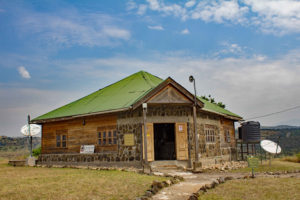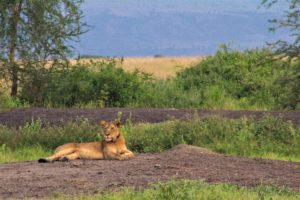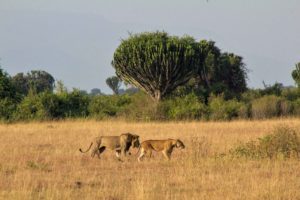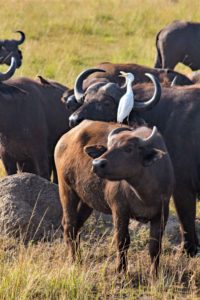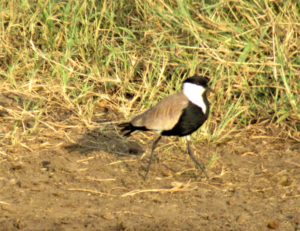Queen Elizabeth National Park is Uganda’s most popular. It’s diversity of habitats, including lakes, savannah grasslands, forests and wetlands, attracts the biggest variety of large mammals in the country. Whilst staying for three nights at Mweya Safari Lodge, our activities included lion tracking and searching for the unique tree climbing lions, boat rides and a more traditional game drive.
On route to our lodge, we stopped at a green roofed bandstand, known as the Queen’s Pavilion. Built in 1958 to receive the Queen Mother, it is located on a site visited by the Queen and Duke of Edinburgh in 1954. There was a great map in bronze relief with a blue line showing the route taken by the Queen, known as the Royal Circuit. The town of Katwe was marked and I remembered the film, Queen of Katwe about a young chess prodigy.
Our morning game drive began at 6.15am with early morning coffee and biscuits in the lodge. Our route to the Kasenyi Plains passed Lake Nyamunuka which literally means ‘rotting meat’ and even with windows closed, there was a strong, sulphurous smell which didn’t seem to bother the herd of buffalo drinking at the waters’ edge.
The terrain of savannah grassland is dotted with a ubiquitous plant, the candelabra shrub Euphorbia Candelabrum, a cactus like succulent that grows to tree like dimensions.
As it was still relatively dark, our first sighting was the nocturnal giant-forest hog, the largest African pig species, which is rarely seen in the grasslands as it prefers the forests. A spotted hyena swiftly followed before we joined a group of vehicles watching six lions. But having spent a morning tracking them the previous day, we drove onwards, passing what is known as ‘kob breeding ground’. However, we couldn’t escape lion sightings. Vehicles were parked again, watching what our guide assured us were two sleeping lions in the grass in front of us. Whilst we could see the tree he referred to, all we could see were what we thought were two ant hills. Eventually, all the vehicles drove off, but our guide suggested staying as they’d be waking shortly. Sure enough they did, and we were rewarded with the male and female walking off into the thicket.
Other animal sightings included the African buffalo, which we noticed were slightly redder because of interbreeding between the cape buffalo and the smaller, redder forest buffalo of the Congolese rainforest. We had two new bird sightings for my checklist: the lappet-faced vulture, Africa’s largest, and the African wattled lapwing which, although a wading bird with distinctive long yellow legs, enjoys damp grasslands.
Following a telephone tip-off we raced to a leopard sighting. After ten minutes of searching the long grass with binoculars I finally spotted leopard ears. It was at this point I decided on four categories of sightings:
1. Sightings seen by your guide but not you, due to their advanced eyesight.
2. Sightings seen by you but in conditions where you cannot get a photo because it is too dark, they’re too far away, or they move before your camera is ready.
3. Sightings you can see and photograph easily.
4. Things you wished you’d seen.
On our morning drive, we experienced all four categories.
